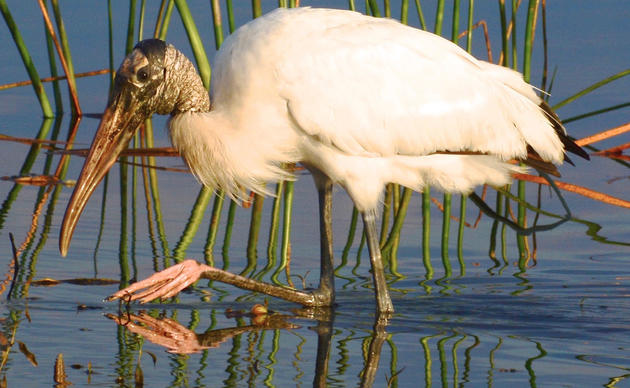Priority needs
Wood storks and panthers
Corkscrew Swamp Sanctuary is part of the Western Everglades. Corkscrew is an important piece of the ecological puzzle making up the mosaic of natural habitats that support a rich diversity of wildlife. We are known for hosting the largest wood stork colony in the nation. Several Florida panthers also call Corkscrew home. Both these species are endangered due to habitat loss and fragmentation, both have vast home ranges far exceeding the ability of our 13,000 acre sanctuary to ensure their survival. Without habitat restoration, the recovery of wood storks and panthers would be impossible.
Shallow wetlands are a restoration priority
Corkscrew science staff have identified the loss of shallow wetlands as a central cause in the decline of the wood stork. Of particular importance are wet prairies which contribute significantly to stork foraging opportunities during an important stage of their breeding season. Shallow wetlands are those wetlands which, on average, are inundated with water less than 6 months per year, some are wet as few as two months per year. Since they are relatively cheap and easy to fill or drain, shallow wetlands have historically been lost in much greater proportion than deeper wetlands. Shallow wetlands are also vulnerable to degradation caused by non-native invasive plants which tend to flourish at the margins of the disturbed landscape due to rapidly fluctuating water tables. Audubon recognizes the importance of protecting and restoring these wetlands whenever, and wherever possible.
How you can help, right now
Donate to Protect Corkscrew's Birds and Wetlands
Make a meaningful and lasting gift to protect Corkscrew Swamp Sanctuary's rare Everglades habitat.
Become a Member
Join an extraordinary and growing community of members dedicated to supporting the conservation of natural ecosystems throughout the Western Everglades.
Sign Up for the Corkscrew eNewsletter
Stay connected to Corkscrew Swamp. Sign up for our monthly online newsletter.




